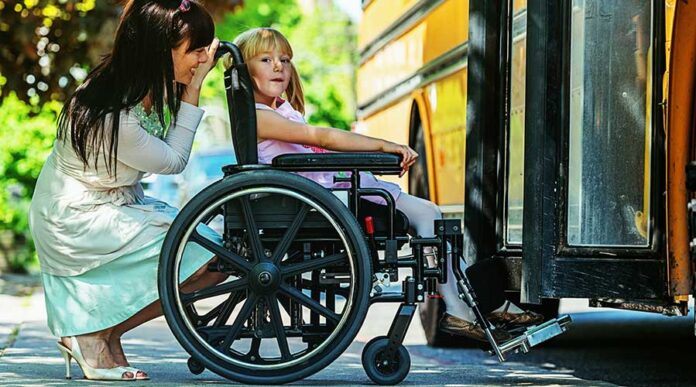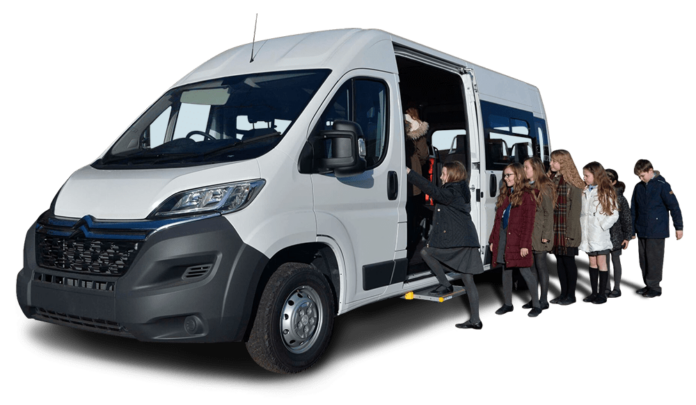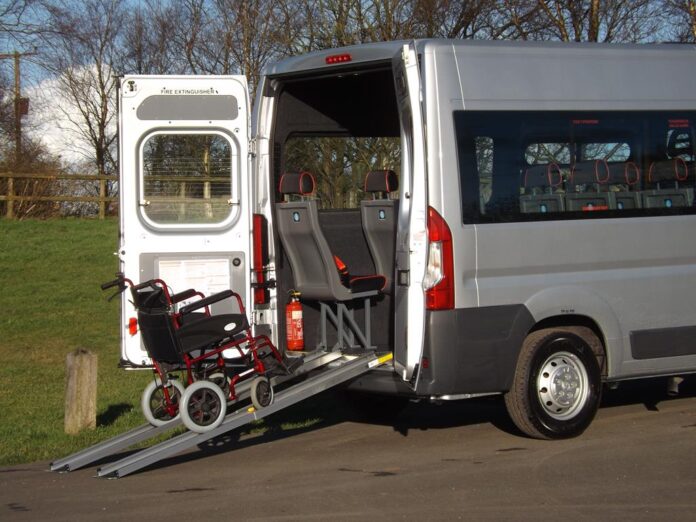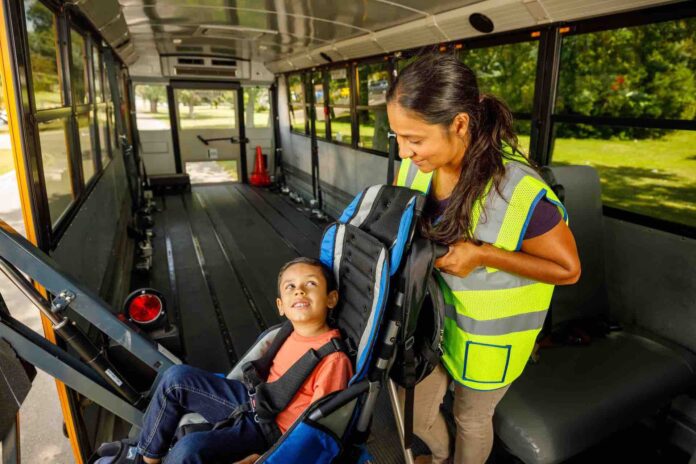
Inclusive education is a fundamental principle that every educational institution should strive to achieve. Ensuring that all students, staff, and visitors feel welcome and have equal opportunities to access education is crucial.
One essential aspect of inclusivity is accommodating people with accessibility requirements, including those with physical disabilities, sensory impairments, learning difficulties, and other special needs.
Things have been hard enough for children over the last few years. The cost-of-living crisis has meant that parents have been forced to make some incredibly difficult decisions. There has also been an increased awareness of how severely the recent pandemic has impacted the mental health of young people.
There is still a long way to go in making schools accessible to all people.
This article aims to provide valuable insights and practical strategies for schools in the UK to enhance accessibility and create a more inclusive learning environment.
Understanding Accessibility Requirements

Before delving into specific accommodations, it is essential to have a comprehensive understanding of accessibility requirements. Accessibility is about removing barriers and providing equitable access to education and facilities for all individuals, regardless of their abilities. Here are some key aspects to consider:
- Physical accessibility ─ This involves ensuring that the school’s physical environment is accessible to individuals with mobility impairments, such as wheelchair users. It includes features like ramps, elevators, widened doorways, and accessible parking spaces.
- Sensory accessibility ─ Schools should address the needs of individuals with sensory impairments, such as hearing or visual impairments. This might involve providing sign language interpreters, captioned videos, tactile maps, and auditory aids.
- Learning accessibility ─ For students with learning difficulties or disabilities, schools should implement instructional methods and materials that cater to diverse learning styles. This may include providing alternative formats of textbooks, assistive technology, and individualized learning plans.
- Communication accessibility ─ Effective communication is essential for all members of the school community. Schools should make sure that information and communication are accessible to individuals with various communication needs, such as using plain language, providing Braille documents, or offering communication boards.
Buy Or Lease Your Own Minibus

Transportation is a critical aspect of accessibility for students with mobility challenges, and having a school minibus can greatly facilitate their participation in various educational and extracurricular activities. The decision to buy or lease a minibus depends on the school’s budget, long-term plans, and specific requirements.
Let’s explore both options:
Buying a Minibus
Purchasing a minibus offers several advantages:
- Long-term investment ─ Buying a minibus can be a long-term investment that pays off over time, especially if the vehicle is well-maintained.
- Total ownership ─ The school has complete control over the minibus and can customize it to meet the specific accessibility needs of students.
- Flexibility ─ The school can use the minibus whenever needed, without restrictions on mileage or additional charges.
However, buying a minibus also comes with some challenges:
- High initial cost ─ The upfront cost of purchasing a minibus can be substantial, which may strain the school’s budget.
- Maintenance costs ─ The responsibility for maintaining and repairing the minibus falls on the school, which can add to the ongoing expenses.
Leasing a Minibus

Leasing a minibus provides several benefits:
- Lower initial costs ─ Leasing typically requires a smaller initial investment, making it more accessible to schools with limited budgets.
- Maintenance coverage ─ Many leasing agreements include maintenance and repair services, reducing the school’s burden in this regard.
- Upgrading options ─ Leasing allows the school to upgrade to a newer model at the end of the lease term, providing access to the latest accessibility features.
However, leasing also has its considerations:
- Limited customization ─ Leased minibusses may not be as customizable as owned ones, limiting the school’s ability to cater specifically to accessibility requirements.
- Lease terms ─ Schools must carefully review the lease terms, including mileage restrictions and any potential penalties for excessive wear and tear.
If you’re not sure where to start, then it’s best to talk to the experts. The Minibus Centre offers minibus leasing options for schools and businesses and they can talk you through the best options available at theminibuscentre.com.
Creating an Inclusive School Environment

Inclusive Policies and Practices
Establishing inclusive policies and practices is the foundation of creating an accessible school environment. Schools should develop and implement policies that emphasize inclusivity, diversity, and equal opportunities.
Things aren’t easy for your students out there, and there’s been a lot of discussion about LGBTQ+ issues in recent months for example. When it comes to students with accessibility requirements, inclusive practices include providing reasonable accommodations, fostering a culture of respect, and understanding, and actively involving students with accessibility requirements in decision-making processes.
Accessibility Audit
Conducting a comprehensive accessibility audit is essential to identify areas that need improvement. The audit should assess the physical infrastructure, communication channels, curriculum materials, and overall school environment.
Engaging with stakeholders, including students with accessibility requirements and their families, during the audit process can provide valuable insights.
Accessible Infrastructure
A significant aspect of accommodating people with accessibility requirements is ensuring that the school’s infrastructure is inclusive. This includes:
- Wheelchair accessibility ─ Install ramps, elevators, and handrails to facilitate easy movement for students with mobility impairments. Ensure that all areas, including classrooms, libraries, and recreational areas, are wheelchair accessible.
- Accessible bathrooms ─ Provide accessible bathrooms equipped with support bars and ample space for wheelchair users.
- Accessible signage ─ Use clear and consistent signage, including Braille, to help individuals with visual impairments navigate the school premises.
- Lighting and acoustics ─ Ensure proper lighting and acoustics in classrooms and other areas to support students with sensory impairments.
Assistive Technology
Leveraging assistive technology can significantly enhance the learning experience for students with accessibility requirements. Schools should invest in appropriate software, hardware, and devices to meet the diverse needs of students.
Some common examples include screen readers for visually impaired students, speech-to-text software or API like this from iFLYTEK for those with writing difficulties, and hearing aids for students with hearing impairments.
Implementing Inclusive Transportation

Whether the school chooses to buy or lease a minibus, ensuring its accessibility is vital. Here are some considerations for implementing inclusive transportation:
- Wheelchair accessibility ─ Ensure that the minibus is equipped with a sturdy wheelchair lift or ramp and has designated spaces with securement systems for wheelchair users.
- Seating arrangements ─ Arrange the seating to accommodate students with various needs, such as providing priority seating for students with mobility challenges or sensory sensitivities.
- Communication aids ─ Install communication aids, such as visual displays or hearing loops, to facilitate effective communication during transit.
- Driver training ─ Train the minibus drivers on disability awareness, accessibility features, and best practices for assisting students with different requirements.
- Regular inspections and maintenance ─ Conduct regular inspections and maintenance to keep the minibus in optimal working condition, ensuring the safety and comfort of all passengers.
The Final Takeaway
Creating an inclusive and accessible learning environment is a collective responsibility that involves schools, educators, students, families, and the wider community. By understanding and accommodating accessibility requirements, schools can foster an environment where every individual feels valued and empowered to thrive.
Implementing inclusive policies, conducting accessibility audits, and providing accessible infrastructure are essential steps toward achieving this goal.
Additionally, having an accessible school minibus can significantly contribute to ensuring that all students have equal access to educational opportunities and extracurricular activities.
Whether the school chooses to buy or lease a minibus, the key is to prioritize accessibility and make a positive impact on the lives of all students, regardless of their abilities.











